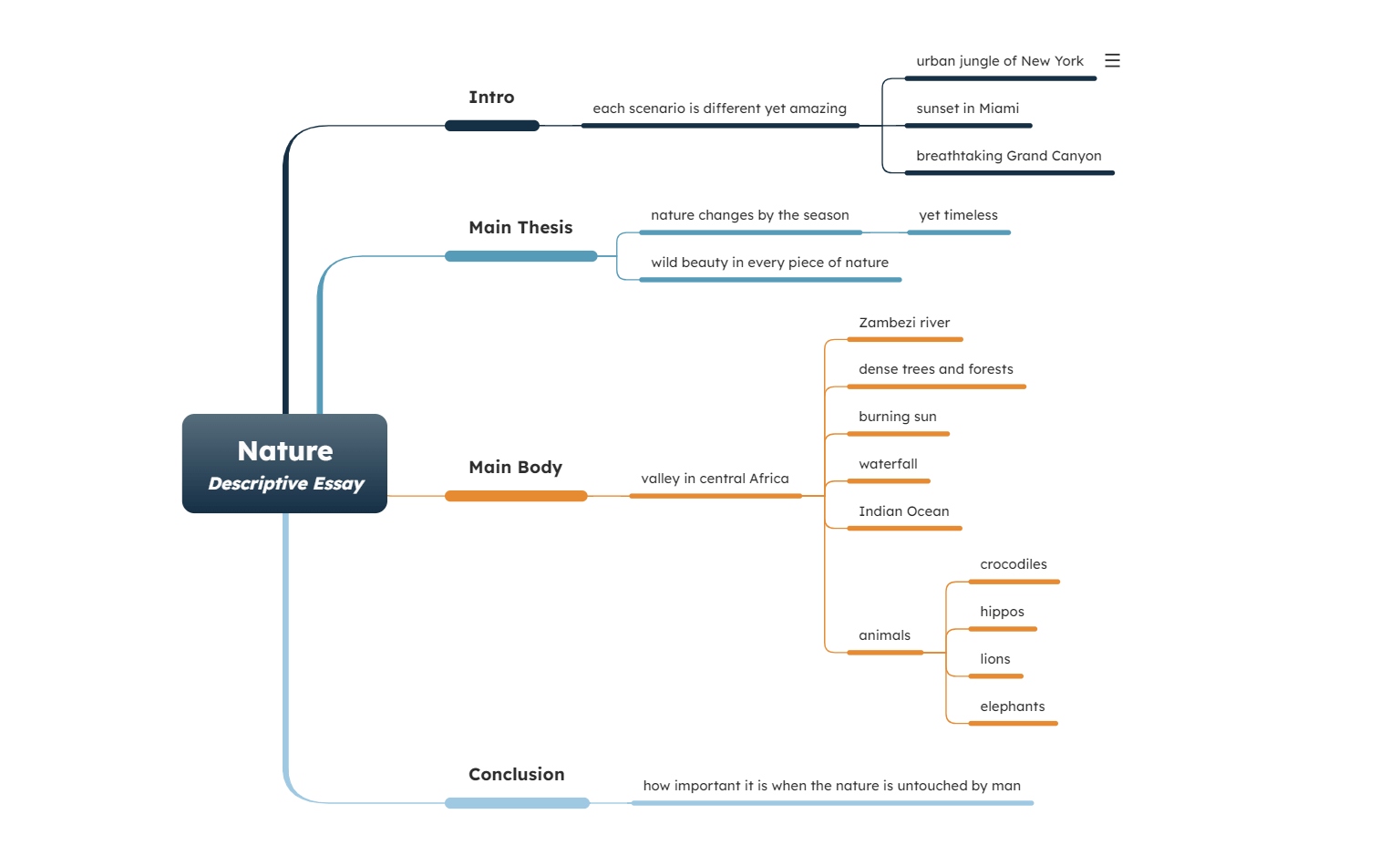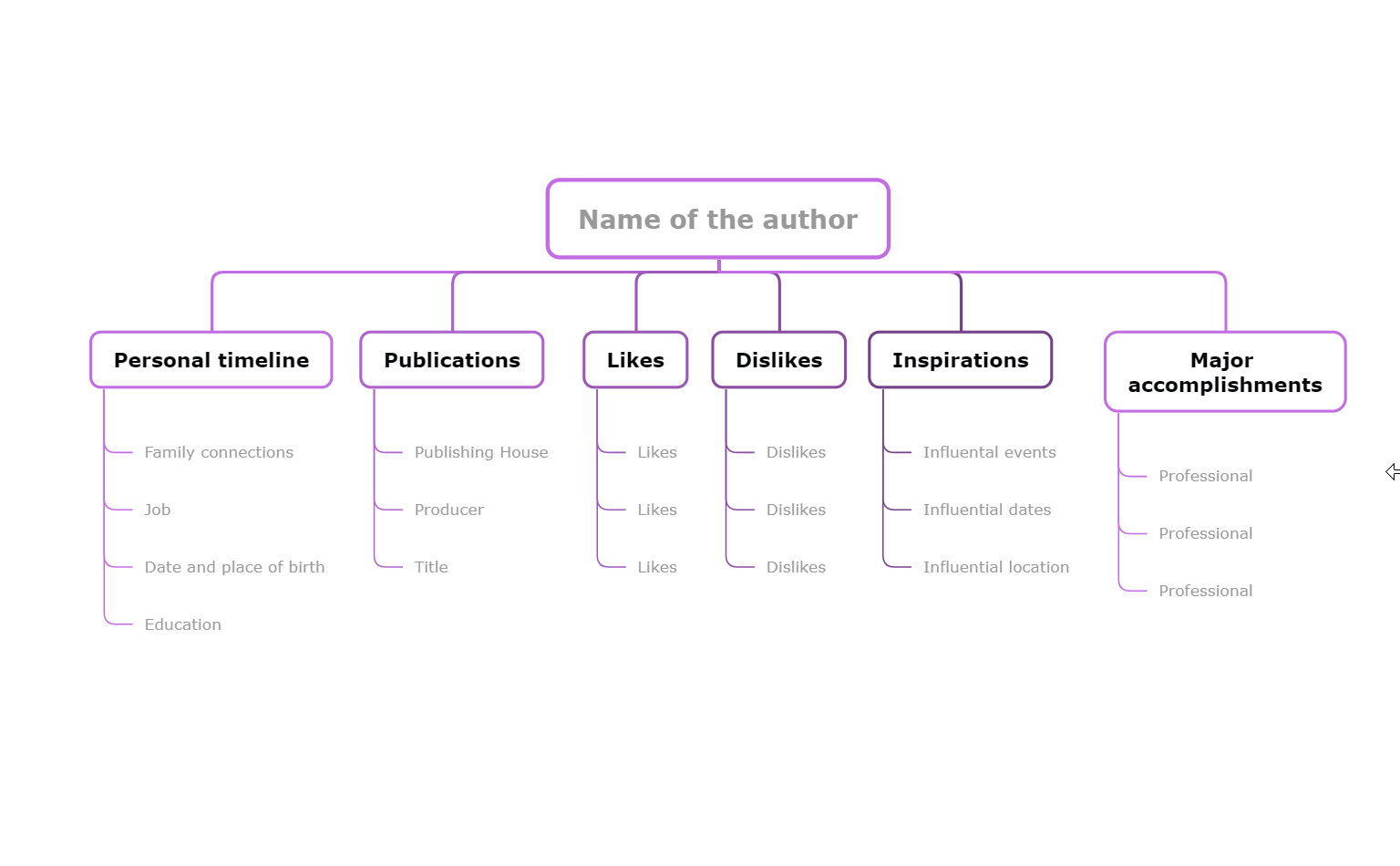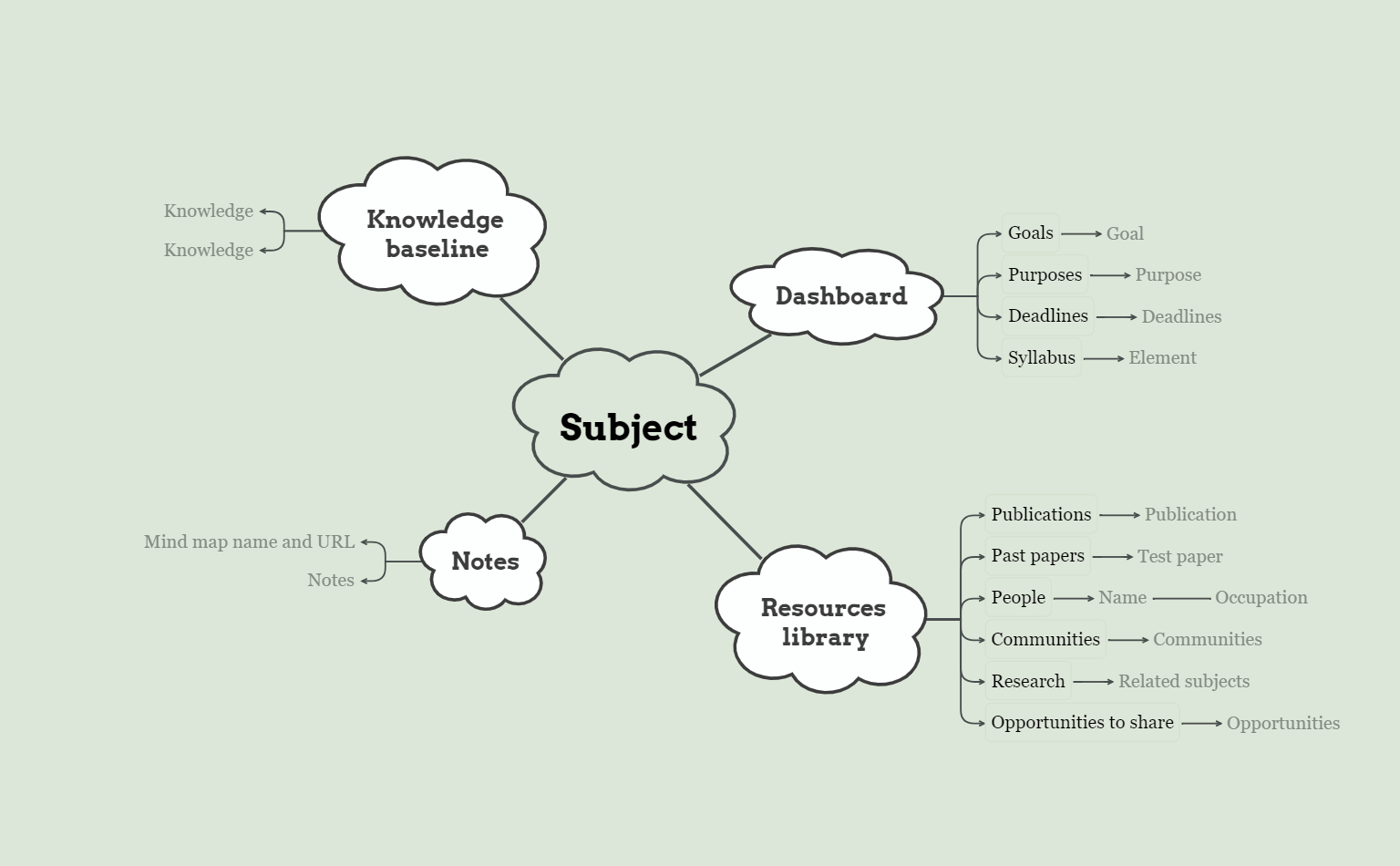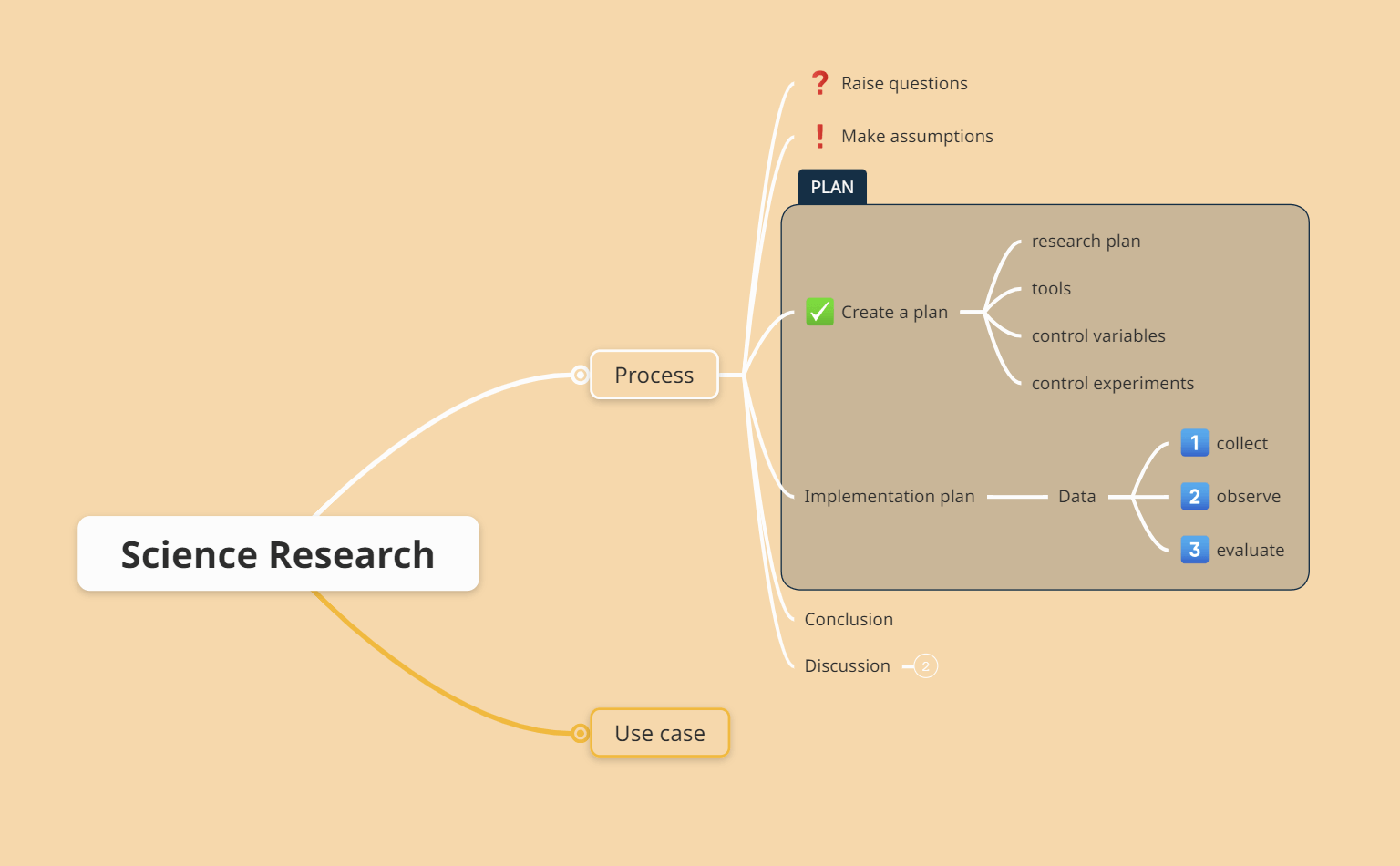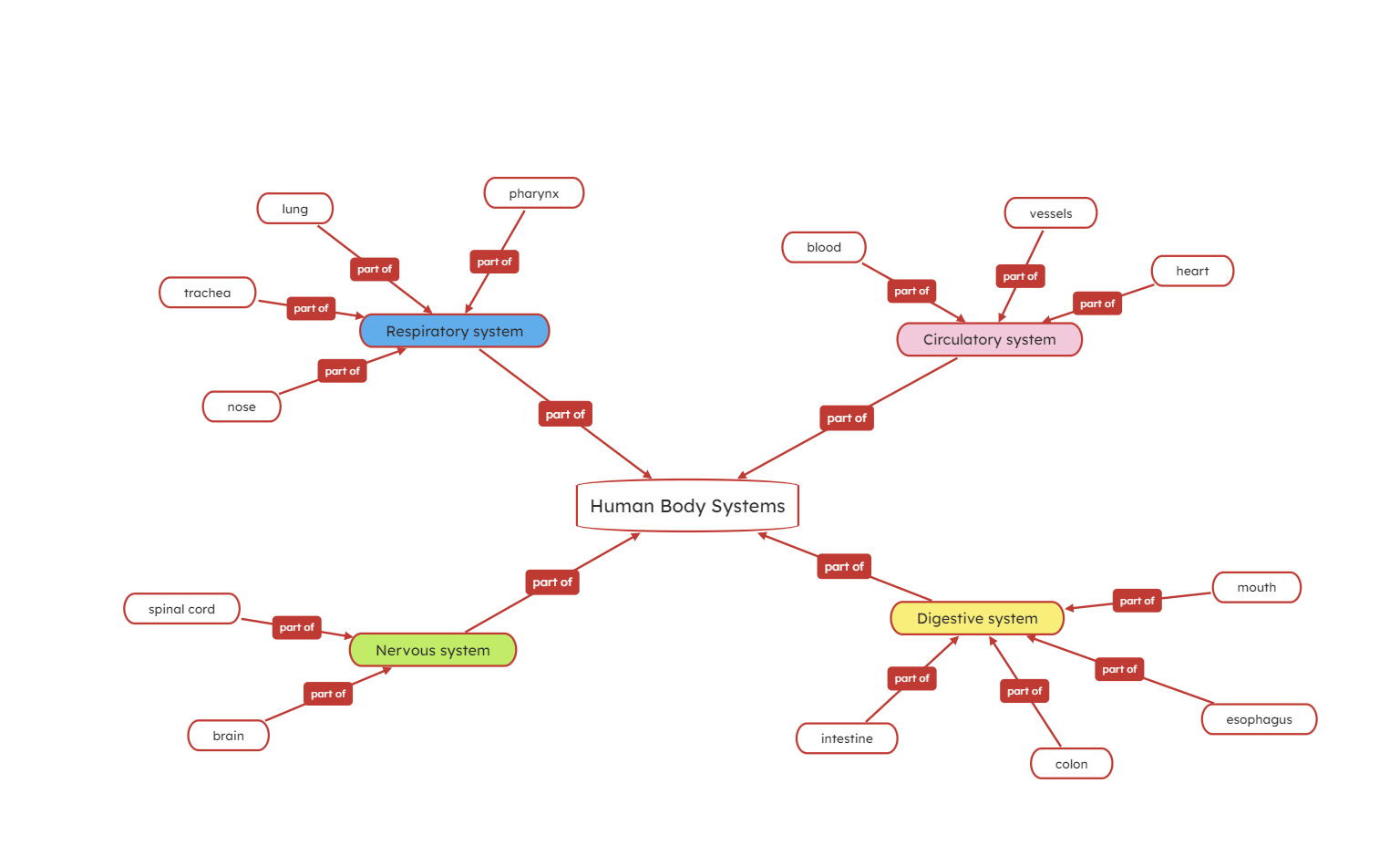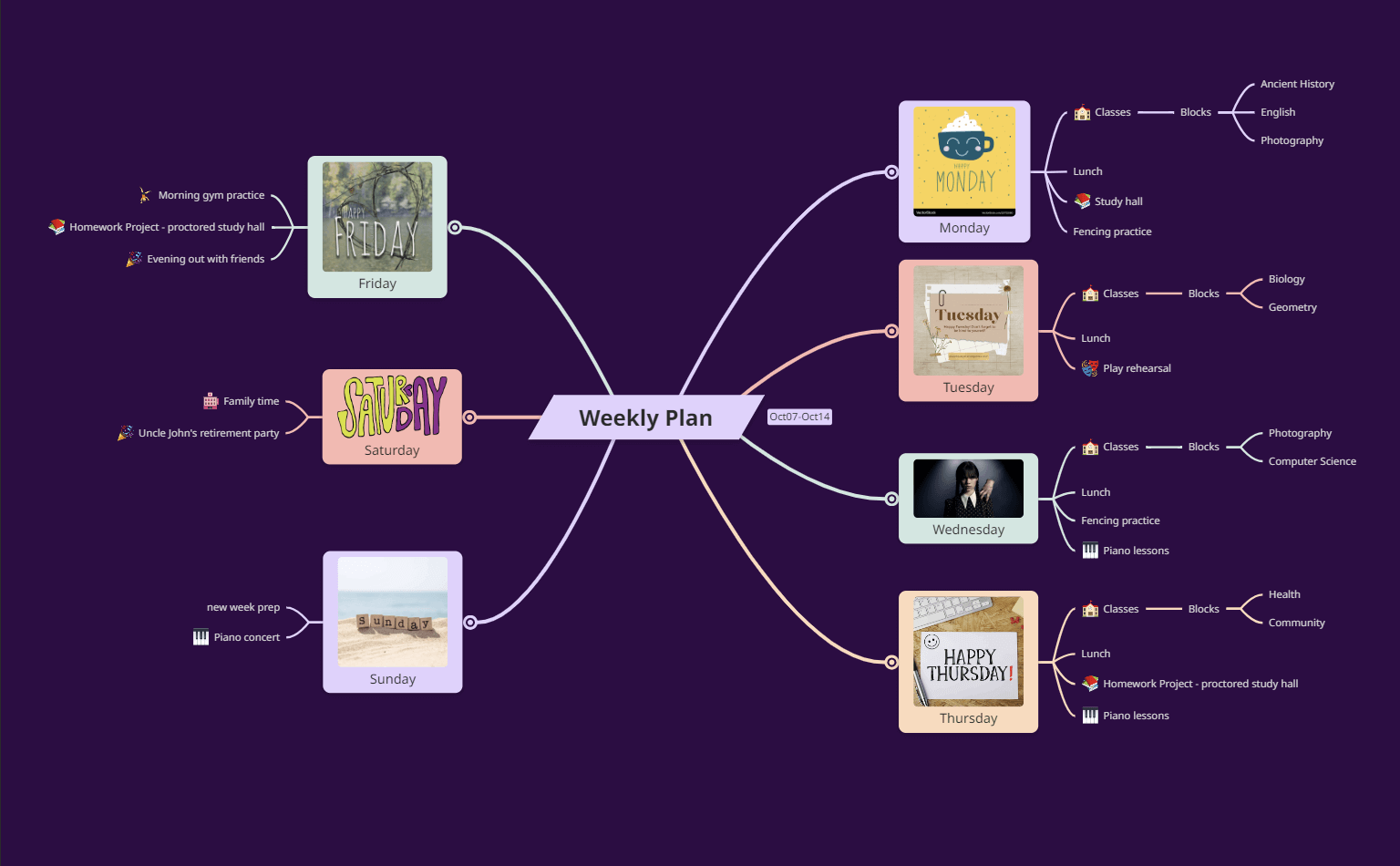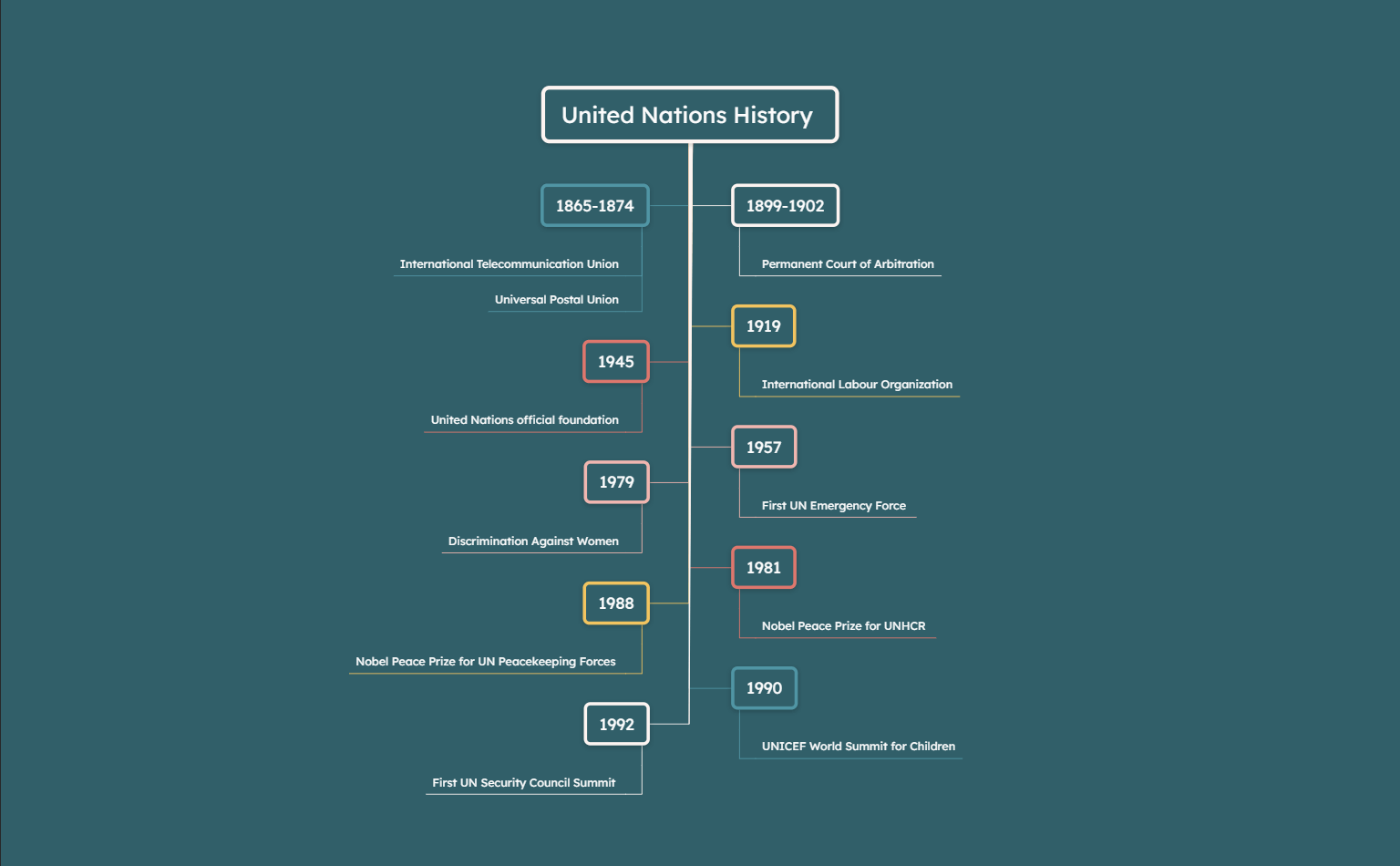What is a mind map?
You might ask what is a mind map. The simplest mind map definition is a hierarchy that shows relationships among pieces of the whole. We prefer to see it as a highly effective way of getting information in and out of your brain.
The easiest way to understand how a mind map works is to compare it to a city map. The city center is the core concept; main roads leading from the center are key ideas; secondary roads are secondary ideas; and so on. Colors, images, or shapes are landmarks of interest.
For more details and mind map examples, keep on scrolling.
40+ Mind Map Ideas for Students
Boost your student success with our collection of mind maps, concept maps, organigrams, timelines, and other prefilled visual templates.
Feel free to use any of them, along with our tips and tricks. Getting started with mind mapping has never been so easy!
Brainstorming
Brainstorming is more than just coming up with ideas. It puts us in a creative state of mind and reinforces our curiosity.
Mindomo lets your thoughts flow freely while making connections and quickly moving from one new idea to another. Use ENTER and TAB from your keyboard to quickly branch out your thinking process.
Ideas for brainstorming - social and environmental issues, daily activities, facts and opinions, pros and cons, history, ethics, traveling, cooking, free time, future plans, etc.
Better note-taking
Take notes just as your ideas or information in class come by - spontaneous, countless, not necessarily structured. Later on, reorganize your diagram so that the info makes sense.
Because you’ll keep it brief (short words/phrases, images, and videos), you’ll always focus on the essential things.
Want to learn more? Check out our guide on how to take notes effectively with mind maps.
X-ray your learning material
Mindomo will help you see what’s important, group essential concepts, and look for connections to new and original ideas.
Choose a radial structure to add, connect, and organize associated concepts. Highlight relevant connections to introduce new ideas.
Memorization
Expand and collapse the diagram to navigate from one level to another. Try recalling as many details as you can about the keywords you added. Add comments to the topics that still need your attention.
Use colors and emojis to highlight what’s important in terms of definitions, figures, quotes, concepts, deadlines, dates, names, formulas, etc.
Quick summarizing
Are you reading to become more knowledgeable? If so, start summarizing with Mindomo. Creating a mind map helps you develop a healthy questioning and rationalizing attitude.
Using shapes, pictures, and colors will make everything stick in your memory. All books, new or read ages ago, will be easily accessible, anytime, anywhere.
A descriptive summary drafted in an org chart highlights the cause-and-effect relationship between the main points and supporting details.
Draft an evaluative summary in the right/left-sided layout for a more organized overview of the information, displaying it in the exact order of the summary structure. Use colors and emojis to highlight key details from the evaluation paragraph.
Essay writing
Go from the complex to the simple and draft a clear, relevant essay. Start with a skeleton that contains everything: research, inspiration from other similar essays, pieces of text, etc.
Start by dumping everything you see fit. Then, reorganize the information meaningfully. Use colors and shapes for highlights. The more you become familiar with the topic, the easier it will be to write about it.
Last, create a coherent draft with arguments, counterarguments, examples, quotes, and referenced sources.
Use Mindomo to draft descriptive, argumentative, narrative, expository, cause-effect, problem-solution, similarities-to-differences, point-to-point, whole-to-whole essays.
Story writing
Lay out your story plot based on the 5 Ws (who, what, when, where, and why).
Break your diagram into three main sections - beginning, middle, and closing, while identifying your story’s characters, plot, setting, problem, and solution.
Character development
Learning grammar
Create branches to define grammar rules, various parts of speech, and their uses. A clear, color-coded classification will ensure easy memorization.
Deal with large quantities of vocabulary - add new words to your maps wherever they thematically fit.
Declutter the diagram - add detailed information as notes, comments, or links (definitions, synonyms, pronunciation tips, sample sentences, audio recordings, mnemonics, etc.).
You can create your diagrams from scratch or use the grammar templates available in Mindomo.
Book summary
Identify important parts of the book and link them together, showing how they relate. You may want to use the book’s table of contents as a skeleton for your diagram.
Nevertheless, the summary can be a collection of ideas you extracted from a specific book, its characters or themes, etc.
Book report
Biography
Speech preparation
Whether it’s a speech for your teachers or colleagues, your speech needs to convince the audience. Build a solid foundation for good speech writing and delivery.
Rank your main points in order of importance and logical sequence in the speech. Icons and emojis stand for key aspects. Add videos to help you retain valuable information.
Rehearse before delivering the speech. At the final review, simplify the content, and leave only keywords and phrases in sight.
Use your diagram as a visual aid for speech delivery if you are allowed.
Group project
“More hands make for lighter work.” This adage speaks about groups being potentially more productive, creative, and motivated than individuals on their own.
Using Mindomo for a group project can reinforce relevant skills like:
-
breaking complex tasks into parts and steps
-
challenging assumptions
-
refining understanding through discussion and explanation
-
giving and receiving feedback on performance
Class presentation
No matter how compelling your message is, your audience will be a sea of blank faces if you don’t showcase it simply.
Make relevant presentations directly in Mindomo and use them to present your ideas, projects, and assignments creatively.
Create an easy-to-follow structure (introduction, body, and conclusion) with a mind map or a concept map layout. Find out more about what a concept map is.
Subject overview
Integrated curriculum
Give meaning to your learning - connect different study areas in a cross-disciplinary concept map. You’ll see and understand better the connections between disciplines.
Highlight the main concepts by using different topic styles for each subject. For example, red for math, blue for philosophy, green for history.
Emphasize unifying concepts by using the same color and shape.
Write down short explanations on the relationship lines between the unifying concepts to leave breadcrumbs of your reasoning.
Dissertation paper
Laboratory report
Science research
Homework
Conceptual understanding
Categorization
Classifying and sorting involves identifying objects that are the same or similar, and grouping them.
Learn how to mind map and take classification to a higher level. The information from these visual frameworks will become engaging and easier to retain.
Weekly plan
Semester plan
Annual reading plan
Plan to get reading goals to strive for. Construct your reading plan with Mindomo since your plan will always be in flux.
Sometimes, you will delete a book and replace it with another that someone recommended. Other times, you will add other books as new topics of interest arise. But you’ll always go back to the plan. Make it a friendly, catchy, ever-changing guide to your reading endeavors.
Exam preparation
Make the most out of mind mapping benefits to get rid of the exam stress! From the first class, create a diagram to collect all class notes, key chapters, references, reading lists, etc.
Also, don’t miss important information such as teacher instructions, the date and time of the exam, and requested materials.
School yearbook
Are you a yearbook writer or planning to become one? Use Mindomo to develop stories, including research and interviewing.
Stories can branch out as more details occur, while research and interviewing can be added as hyperlinks, notes, comments, and audio recordings.
History timeline
Create concise yet comprehensive visual narratives to offer a glimpse into the complex sequence of events in world history.
A quick view on any created diagram will help you understand the footsteps of historical figures, turning points, and the fusion of past and present.
History by country
Mind mapping can be perfect for memorizing hallmark events such as a country’s long and complex history.
Creating your map will also help you develop historical thinking skills like contextualization and causation.
Art history
SMART goals planning
Career planning
It is crucial to map out a career vision statement to help guide you. Otherwise, it is like driving aimlessly without a clear destination.
Make sure you focus on the desired career direction, the required job skills and knowledge, and the means to get them.
School events planning
Are you part of a student committee directly involved in the planning and promotion of the school’s events? Then you know these events speak of your school’s character and are a reason new students and families are drawn to enroll.
Use collaborative mind map maker to create to-do lists that stick with you and will ultimately ensure the event’s success.
Time management
Daily schedule
Meeting record
Replace the linear text format of your meeting agenda with a visual structure.
From all mind map types, choose the layout you find most engaging. Share the map so everyone can see and understand all key aspects at a glance - main ideas, discussion records, conclusions, etc.
Job search
Interview prep
Be prepared to show that you are the right candidate. Visualize all key aspects you need to cover.
Create three main branches - before, during, and after the interview. Expand on the details you see fit.







